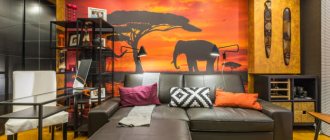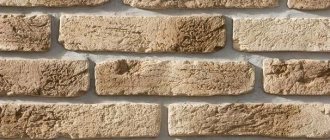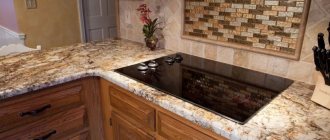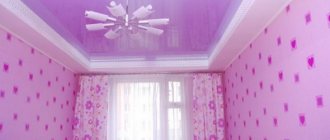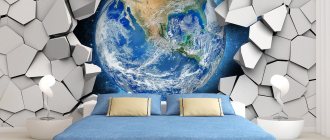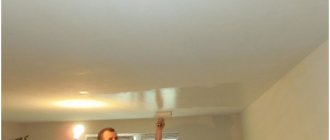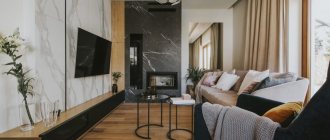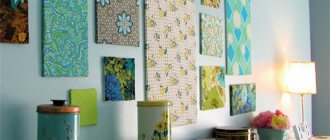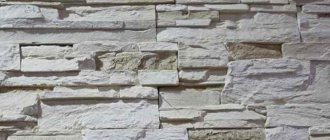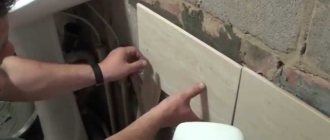The role of a mirror wall in the interior
Mirror walls in interior design have several functions: visual expansion of space; addition to the interior to improve overall perception; fragmentation of space.
Crushing the reflective surface can greatly change the visual experience of using mirrors in a room.
Most often, designers use mirrors when they want to achieve the effect of visually expanding a room.
With small distances between the elements of the mirror wall, the visual effect of increasing the volume will be most complete.
The use of large mirrors visually changes the dimensions of the space
Mirror wallpaper for walls
Decorating indoor walls with mirrored (metal) wallpaper is a new word in creating a fashionable interior. This unusual finishing material is unique in its own way, as it completely isolates the room, making it inaccessible to listening devices. At the same time, mirror wallpaper looks rich and unsurpassed. The original material looks so impressive that it can replace even the most sophisticated mirror in the interior; however, such a pleasure can be afforded by people with above-average income.
To glue mirror wallpaper you need a perfectly flat wall. This finishing material is significantly heavier than paper wallpaper, so when working with it, special glue for heavy wallpaper is used. The mirror coating on the walls looks very durable, but some care must be taken when handling it - the wallpaper is sensitive to scratches.
An amazing “mirror” in a roll is created on the basis of a small amount of metal: a thin layer of aluminum foil is applied to the coating, which is treated with a special transparent varnish on top.
The color palette of metal wallpaper is varied enough to satisfy the most sophisticated taste. Thus, the mirror coating can have a steel, silver, golden or bronze shiny tint.
Careful treatment will ensure that mirror wallpaper has a long service life. This coating is not afraid of the sun: it does not fade or fade under its direct rays. In addition, such wallpapers have a very high resistance to moisture, so they can even be used in the bathroom.
Rules for placing a mirror on the wall
When planning a mirror wall in the bathroom, you need to take into account the operating conditions of this room, as well as its size. The bathroom is, first of all, moisture, condensation, dampness, frequent accidental splashes and a lot of water.
If such a wall has constant contact with water, for example, it is part of the wall of a shower stall, then it should not allow water to pass through.
The reflective design must be waterproof; these are specially produced for baths, baths and saunas
Depending on the quality and chemical composition, tap water, after evaporation, leaves its traces on any surface, which are especially noticeable on such a wall.
Occasional water splashes and condensation should also be taken into account. All together leads to the fact that mirrored walls in the bathroom will become dirty more often than in other rooms.
The bathroom is most often quite cluttered with furniture and plumbing fixtures, which are located at a low height.
A mirrored bathroom looks very impressive
In such cases, it is recommended to place mirrored walls or their elements higher so that most of the furnishings are not reflected in them.
The conditions of the bathroom and kitchen are largely similar. As a rule, these are the same small room sizes. Humidity, temperature changes and rapid contamination of surfaces in the food preparation area. Recommendations for placing such walls in the bathroom and in the dining room are also similar.
It is not recommended to place reflective elements in the cooking and washing areas due to their rapid contamination.
Mirror elements in the kitchen are usually installed in the dining area, at the top of the walls. They try to arrange them in such a way as to minimize the number of furnishings and people in the kitchen reflected in them.
One of the best options for placing such a wall in the kitchen is the side opposite the window.
To add natural light to the kitchen, you can install a mirrored wall opposite the window.
What rooms in the apartment are they used for?
You can decorate a wall or part of it with a mirror in any room.:
- a large living room will look majestic with a mirror panel on the wall;
- in the hallway, mirrored cabinet doors will not only increase the space, but also functionally complement the room;
- a mirror wall can give a small bedroom a feeling of airiness;
- corridor or veranda;
- cabinet;
- children's room;
- bathroom - using a mirror wall will make it not only visually larger, but also lighter.
When choosing material and placement, one should not forget about the features and purpose of the room. For example, in the hallway it is recommended to finish only the upper part of the walls, in the kitchen the mirror surface should be easily accessible for cleaning, and for the bathroom you should choose only moisture-resistant materials.
It is not recommended to place mirrored walls opposite dark bulky objects, or opposite the seating area. It is not advisable to place mirrors opposite each other .
Interior made of mirrors
Bedroom
Typically in the bedroom, such surfaces are placed on the ceiling, at the head of the bed, as the back walls of open shelves and as lining of cabinets. Everyone's tastes are different, however, it is generally accepted to avoid placing such walls opposite the head of the bed at the full height of the wall. It is also not recommended to install such surfaces at bed level or below.
Mirror walls in the bedroom interior
Hallway
As for the hallway, it is logical to place mirror elements on the ceiling. Most hallways do not have nearby natural light sources, which is why they often suffer from a lack of light.
This deficiency is compensated with the help of enhanced artificial sources. In such cases, a mirrored ceiling will help improve the illumination of the hallway, more evenly distributing the reflected rays of light from lamps and fixtures.
In the hallway you can make a special finish from reflective materials
Living room
The living room, as a rule, has the largest dimensions in the house, so it is not limited when installing mirrors in small rooms. It is also free from the restrictions of a bedroom and kitchen with a bathroom. It is in the living room that the designer’s imagination can be fully realized.
Mirror tiles in the TV area
When are inserts used?
A mirror surface can visually enlarge a space, which is why the technology of using mirror walls is used in the interiors of small rooms. In addition, such a wall makes the room brighter and highlights the design elements of other surfaces.
Also, reflective panels are used when the layout is incorrect - with their help you can make the room longer or wider.
Mirrors on the walls as a decorative element can adequately decorate any room, provided they are placed correctly.
It is not recommended to mirror parallel walls.
Varieties
Mirror walls come in the following types:
- Tile.
- Stickers (stickers).
- Facing panels.
- Wallpaper.
Tile
These tiles have different bases. The most common products are based on glass, polystyrene, polyurethane and plastics. All these tiles, with the exception of glass, are usually lightweight and often have a self-adhesive layer.
Glass-based products are heavier and are not recommended for installation on the ceiling.
The reflective surface of the tile can be clean and smooth, or it can have changed geometry, color rendition, and even bear patterns and complex images. An example of modified geometry is the common beveled tile. Typically, such glass-based tiles have beveled edges of a large area; they form a pattern and refract light on their surface.
Mirror tiles, with the exception of glass, are usually lightweight and often have a self-adhesive layer.
Wallpaper
Wallpaper, as a rule, is based on a durable film on which a reflective layer is applied. The reflective layer can have different variations, the same as the tiles. Starting from a solid, smooth mirror to large, complex images printed using photo printing.
Trendy mirror wallpapers look interesting
Such wallpapers are heavier than paper ones, so not every adhesive is suitable for them.
Also, such wallpapers often have a high reflectivity of radio waves. In other words, mobile phones in a room with this wallpaper may have poor signal reception.
Stickers
Decals or stickers are used as reflective design elements. There is simply a huge variety of such stickers on the market with different bases, shapes and applications. For example, a sticker on a thin film base is most often used for gluing furniture and even, smooth surfaces.
Wave Stereoscopic Mirror Wall Sticker
Cladding panels
By facing mirror panels it is correct to understand large, durable and heavy finishing elements. As a rule, they are made of thick tempered glass or acrylic. The heaviest cladding panels are most often used in places where large mechanical loads are expected. However, there are also lighter and smaller options, such as ceiling or wall panels.
Mirror panels on a self-adhesive basis
Types of wall panels
Depending on the material used to make mirror walls and sizes, there are different variations of reflective panels. The material used is usually acrylic or plastic.
Acrylic
The surface of this material is durable and resistant to high temperatures. Exposure to direct sunlight does not affect the appearance of acrylic mirrors. In addition, they are flexible, therefore easy and variable to install. The only drawback of the surface is its external vulnerability .
The appearance is almost as good as glass mirrors.
Tile
Mirror tiles are made of impact-resistant glass. Due to the variety of shapes and sizes, various compositions can be created from tiles. However, it is quite difficult to work with, and such a finish will not be a budget option.
Flexible plastic film
Mirror coating on plastic panels is a good option with a lot of advantages:
- this surface is not afraid of impacts;
- due to flexibility, you can give it any desired shape;
- not afraid of moisture and chemicals;
- does not apply to expensive materials.
However, there are also disadvantages - these are fragility and instability in direct sunlight.
Stripes
Mirror strips are made of plastic or acrylic. You can also cut them yourself from flexible mirror cloth. This material can be perfectly combined with any interior solutions, be it paint, wallpaper, wood or decorative stone.
One-piece fabric
A solid mirror sheet is usually purchased to decorate an entire wall . You can order it based on individual sizes, or buy a plastic sheet that you can cut yourself.
Six decor options
Mirror panels for cabinets and bars
One of the popular options for using reflective elements is furniture decor - cabinets and bedside tables. Such decorations can be roughly divided into several types. The first option for decorations from mirrors is quite standard - the back and side panels of the inside of cabinets, sideboards, and bars.
Mirrored wardrobe
Complete decoration of furniture
The second option is to decorate the furniture externally with large solid mirror elements; more often, glass stickers based on a thin film are used as such elements.
Mirror sliding doors for wardrobes mirror bronze
Reflective elements
The third option is small external mirror elements.
Mirror elements in furniture
Panel
Another option for using mirror elements in decor is a panel. This design element consists of a large number of individual mirrors that combine to form a complete picture, and can vary greatly in shape, appearance and size.
In today's modern world, mirror exhibitions have become quite popular.
Mirror honeycomb finish
A beautiful option is honeycombs.
Mirror mosaic rhombuses 3x2cm
Use of arches and niches
Arches and niches are decorated with mirror panels, stickers or wallpaper. If in the case of an arch there are no strong restrictions, then it is better to leave the decorative niches empty or sparsely filled. Both arches and niches are rarely decorated with simple mirror elements. Most often, various patterns and designs are used in mirrored decorative elements intended for arches and niches.
Mirror panel with facet in the interior
In conclusion, we can say that today mirror-based finishing and design elements are presented on the market in a wide range. There is a wide choice for every taste and budget. Well, such walls and other decorative elements made from mirrors themselves can greatly change the appearance of the house, giving additional comfort and coziness.
How to fasten with your own hands?
The process of attaching mirror tiles is not particularly different from attaching ceramic tiles.
- The tiles are attached to tile adhesive, which is applied to the inside of the tiles in a layer of five millimeters.
- Then it is applied to the wall and pressed. The evenness of the seams will be ensured by special crosses.
- After laying is completed, the seams are rubbed with construction mixture.
- The dried surface must be washed and rubbed until shiny.
Installation of self-adhesive panels
This type of cladding usually has a self-adhesive base. Therefore, installation is not too complicated, but it has a number of nuances that it is better to know about in advance:
- the wall under the panels must be carefully prepared - it must be perfectly flat, otherwise the installation will be short-lived or not take place at all;
- before gluing to the wall, the panels must be laid out on the floor for at least three days;
- It is recommended to treat the wall surface with a primer.
The canvas should be cut along the front part.
Rules for laying in profile
If the wall intended for decoration with mirror panels does not need to be perfectly leveled, you can attach the material to a profile.
For this purpose, a frame is created from metal profiles. Of course, this method is more expensive financially . And it is somewhat more difficult to do such work on your own.
Ceiling finishing features
Mirror panels are also suitable for finishing the ceiling. There are several ways to attach them:
- gluing;
- installation with screws;
- frame fastening.
For the first two methods, the ceiling must be perfectly flat. For uneven surfaces, the third installation method is ideal.
Bathroom installation
All work in the bathroom must be carried out using special building mixtures that are not destroyed by moisture. After all, the bathroom is a place where there is constantly high humidity and temperature changes. In addition, the use of cement glue is prohibited, as it can destroy the mirror layer. Special compositions are sold for mirror tiles.
Functions of a mirror in the interior of a hallway
In many apartments this space is very small, but mirrors in the hallway interior visually enlarge it and fill it with light. Round ones are soothing, and shaped products add variety to a boring interior.
A mirror can become an accent element that distracts attention from the imperfections in the geometry of the room
If this item is large, then it seems to expand the hallway, especially when located on a separate wall, completely covering it. Medium or small is used to look into it - this is the most important function of mirrors.
When choosing a mirror you should consider:
- what size is the room;
- lighting level, location of light sources;
- shape and location.
The lighting design can be anything - small LED bulbs are very popular, and sometimes massive “antique” floor lamps are used.
The function of a mirror can be performed by a wardrobe with mirrored doors.
If the mirror is of high quality and the lighting is chosen correctly, then everyone who looks in it will look good - such an element of the decor gives joy.
How to decorate the hallway space depends on the owners of the house, their imagination, and financial capabilities. The main thing is that this room creates a feeling of home comfort from the threshold.
The most popular are rectangular mirrors, installed horizontally or vertically.
Round and oval mirrors look especially impressive in rustic interiors
